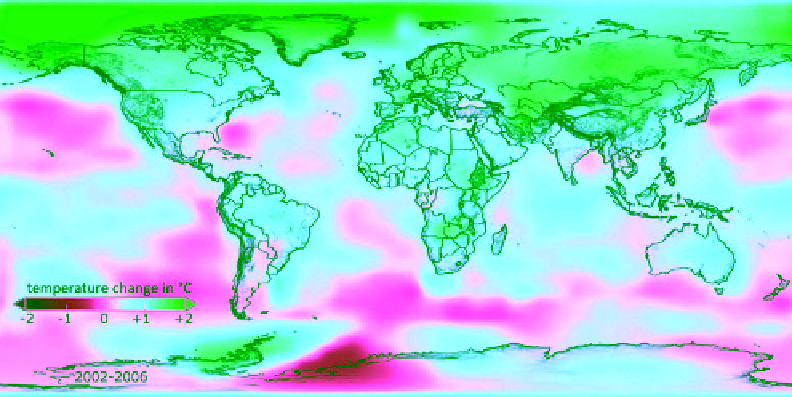Environmental Engineering Reference
In-Depth Information
Figure 2.1
Temperature change from 2002 to 2006 compared to the long-standing average.
Source: NASA, svs.gsfc.nasa.gov.
Of the mountain glaciers in the Eastern Alps less than half the mass that existed in
1850 remains today.
2.1.2 Natural Catastrophes Occur More Frequently
As global temperatures rise, extremes in weather are also occurring. Major differ-
ences in temperatures cause storms to be more violent, rainfall to be heavier and
high tides and fl ooding to be more frequent than before. The Munich Reinsurance
company in Germany has long been concerned about the increase in natural catas-
trophes and resulting damage. In the event of loss or damage, reinsurance companies
are responsible for covering part of the insured damage.
Economic as well as insured damage has risen sharply since the 1950s, as shown
in Figure 2.3. Yet the graphics only include major catastrophes. Small local and
medium-sized events are not included in the chart. There are two reasons for the
rise: fi rstly, due to growing prosperity in the world, there is an increase in the number
of valuable things that can be damaged when a natural catastrophe occurs. Secondly,
the frequency and intensity of natural catastrophes has increased considerably.
Hurricane Katrina alone, which devastated the city of New Orleans in 2005, caused
around US$125 billion worth of damage and cost the lives of 1300 people (also see
Figure 2.4 ).
Europe has also experienced an increase in extreme and devastating weather condi-
tions. Examples include the 2005/2006 winter, which was the mildest since records
began, and the record heat in the summer of 2003. Major heatwaves such as this
one cause a decline in harvest yields.

